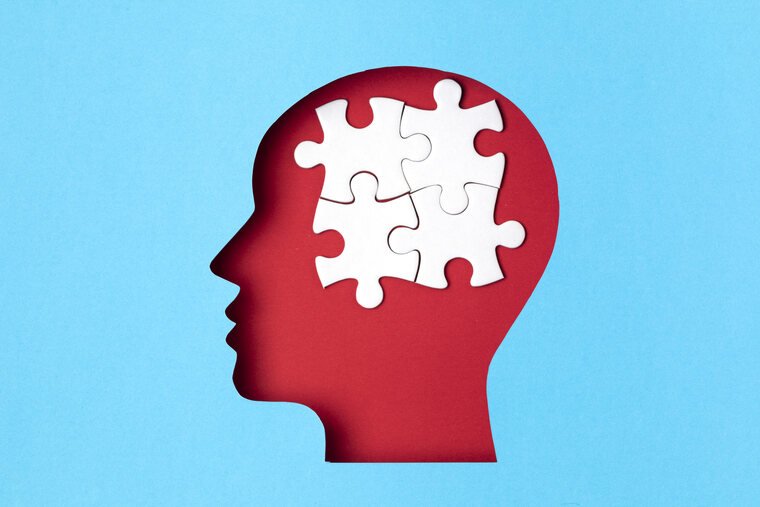In a world where scientific breakthroughs are celebrated, and intellectual duels are waged, a 25-year wager between renowned neuroscientist Christof Koch and philosopher David Chalmers over the origin of consciousness has finally come to a conclusion.
In 1998, following a day lecturing at a conference on consciousness in northern Germany, Koch bet Chalmers that within the next 25 years, science would finally solve the brain’s relationship with consciousness.
The men were in “a smoky bar in Bremen,” reported New Scientist, “and they still had more to say. After a few drinks, Koch suggested a wager. He bet a case of fine wine that within the next 25 years, someone would discover a specific signature of consciousness in the brain. Chalmers said it wouldn’t happen and bet against.”
Now, two-and-a-half decades later, at the Association for the Scientific Study of Consciousness (ASSC) annual meeting in New York City, Koch declared the philosopher to be the winner, conceding that the neurological mechanisms behind consciousness remain a mystery.
“It was always a relatively good bet for me and a bold bet for Christof,” Chalmers, now co-director of the Center for Mind, Brain and Consciousness at New York University, told Nature.
Gracious in defeat, Chalmers is confident that this is merely a chapter in the greater narrative of understanding consciousness, asserting, “There’s been a lot of progress in the field.”
“It started off as a very big philosophical mystery,” said Chalmers. “But over the years, it’s gradually been transmuting into, if not a ‘scientific’ mystery, at least one that we can get a partial grip on scientifically.”
Koch and Chalmer’s friendly wager was ultimately settled by a groundbreaking study, which tested two leading hypotheses about the neural underpinnings of consciousness. The study results were unveiled at this year’s 26th annual ASSC conference.
Consciousness, as Chalmers eloquently described in Nature, encompasses every facet of human experience— “what they taste, hear, feel and more. It is what gives meaning and value to our lives.”
Yet, despite millennia of analyses, science still grapples with understanding the intricate web of neural activities that give rise to this profound phenomenon.
As for Koch and Chalmer’s wager, it became a fading memory until Stockholm-based science journalist, Per Snaprud, unearthed a forgotten recording of his interview with Chalmers from 1998. The tape served as a reminder of the bet’s terms and the case of wine at stake.
In 2018, Snaprud revealed “the consciousness wager” in a cover article for New Scientist. Around this same time, Koch and Chalmers had also become pivotal figures in a project supported by the Templeton World Charity Foundation, aiming to expedite consciousness research by fostering collaboration between rival researchers.
Through the project, competing academics would engage in “adversarial” experiments to scrutinize various hypotheses on consciousness. Chalmers explains, “If their predictions didn’t come true, this would be a serious challenge for their theories.”
The findings from one of the adversarial collaboration experiments involving several researchers, including Koch and Chalmers, were unveiled at the ASSC conference on June 23.
The study pitted two prominent theories of consciousness against each other: Integrated Information Theory (IIT) and Global Network Workspace Theory (GNWT).
IIT posits that consciousness arises from a specific pattern of neuronal connections—a “structure”—within the posterior cortex, persisting for the duration of an experience.
Conversely, GNWT suggests that consciousness emerges through the broadcasting of information across a network of interconnected brain regions, with the prefrontal cortex taking center stage at the beginning and end of an experience.
Six independent laboratories undertook the adversarial experiment, meticulously following a pre-determined protocol and employing diverse complementary methods to measure brain activity.
Although yet to undergo peer review, these experiments’ results failed to provide a perfect match with either theory.
Lucia Melloni, a neuroscientist at the Max Planck Institute for Empirical Aesthetics and one of the researchers involved, said, “This tells us that both theories need to be revised. The extent of that revision is slightly different for each theory.”
While the sustained presence of information in the posterior cortex provided a glimmer of hope for IIT, the predicted synchronization between different brain regions failed to materialize.
GNWT, too, faced challenges as certain aspects of consciousness were observed in the prefrontal cortex, albeit without the anticipated broadcasting at the end of an experience.
Thus, GNWT emerged as the slightly less triumphant theory in this particular experiment. Nevertheless, Melloni cautions against hasty conclusions, stating, “But that doesn’t mean that IIT is true and GNWT isn’t.” Rather, proponents of these theories must recalibrate their mechanisms in light of the new evidence that has surfaced.
Ultimately, the results mean that, contrary to Koch’s 25-year-old prediction, the search for answers to the mystery of consciousness remains elusive.
As part of the Templeton Foundation initiative, Koch is actively studying IIT and GNWT in animal models, while Chalmers spearheads another project evaluating alternative hypotheses of consciousness.
Melloni emphasized that the convergence of rival theorists willing to have their predictions tested by independent researchers is rare. “That took a lot of courage and trust from them,” said Melloni, asserting that such endeavors are vital for the advancement of science itself.
As for the wager, Koch presented Chalmers with a case of fine Portuguese wine to honor his commitment—symbolic of the convergence of minds and the intertwining of scientific pursuit and good-natured rivalry.
And while the eternal quest to unravel the enigma of consciousness continues, researchers believe that these adversarial collaborations can propel humanity ever closer to unlocking the secrets within our extraordinary minds.
When asked if he would consider another wager, with a spark of determination, Koch told Nature, “I’d double down.”
“Twenty-five years from now is realistic because the techniques are improving, and, well, I can’t wait much longer than 25 years, given my age.”
Tim McMillan is a retired law enforcement executive, investigative reporter and co-founder of The Debrief. His writing typically focuses on defense, national security, the Intelligence Community and topics related to psychology. You can follow Tim on Twitter: @LtTimMcMillan. Tim can be reached by email: tim@thedebrief.org or through encrypted email: LtTimMcMillan@protonmail.com

